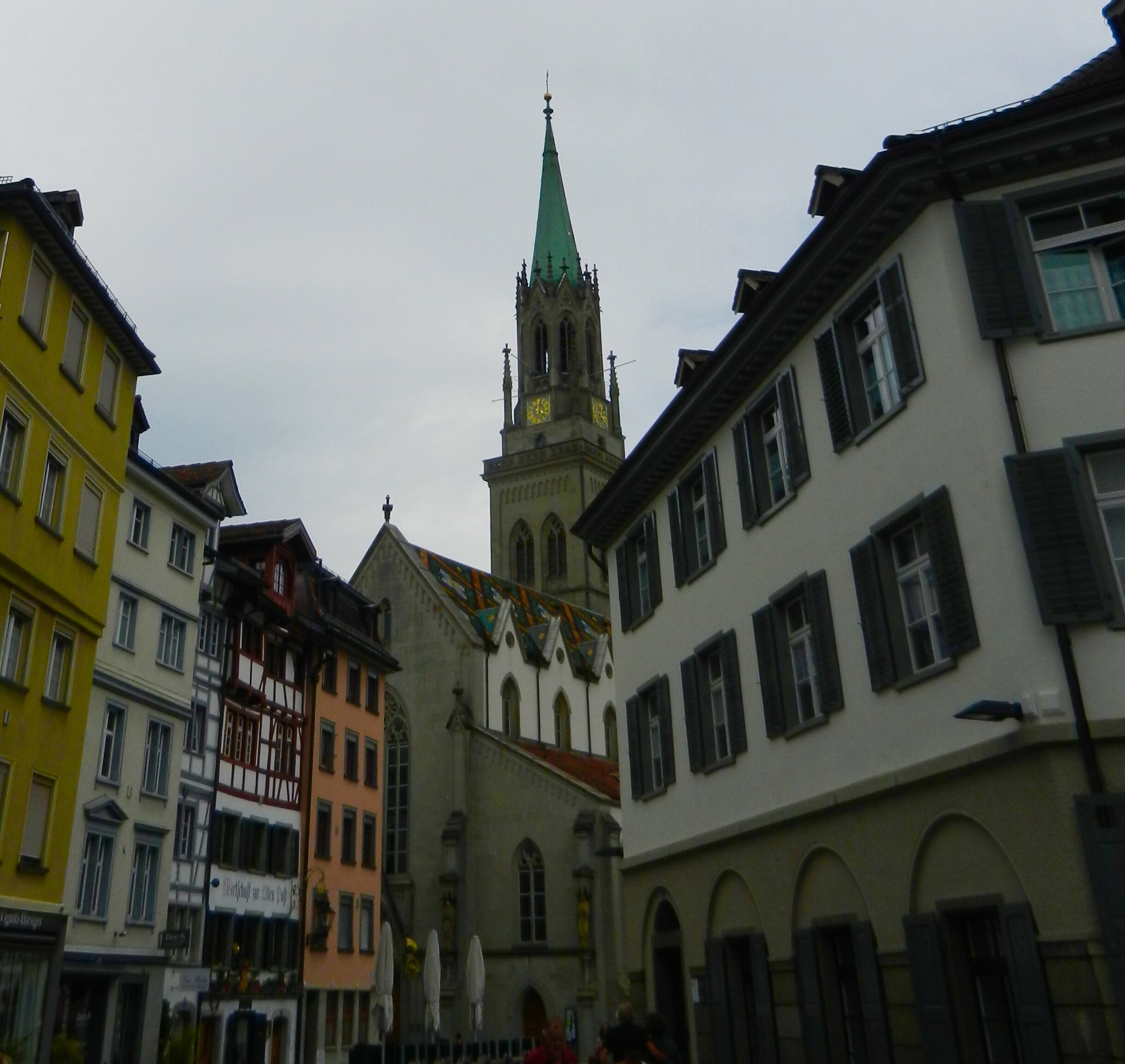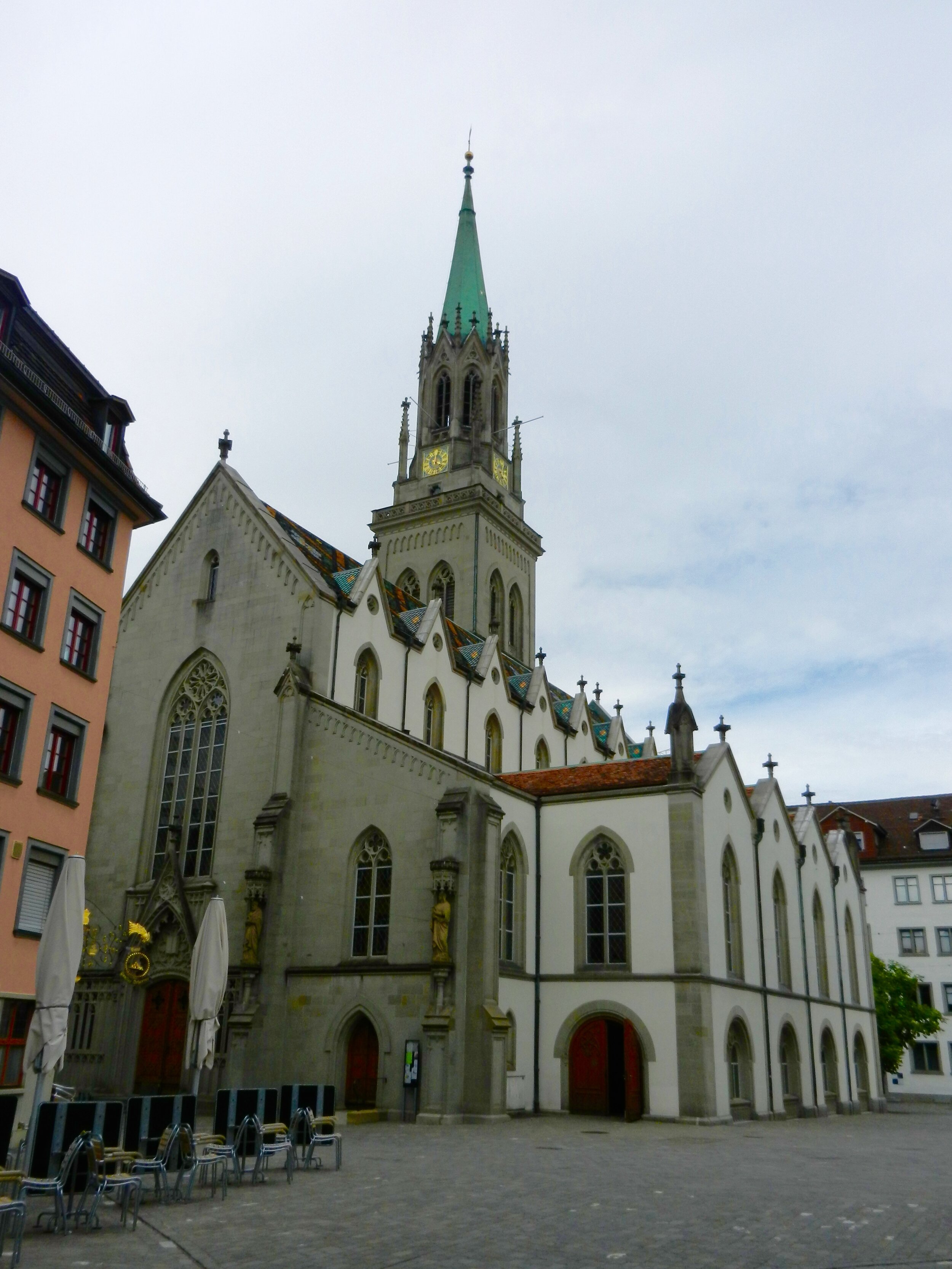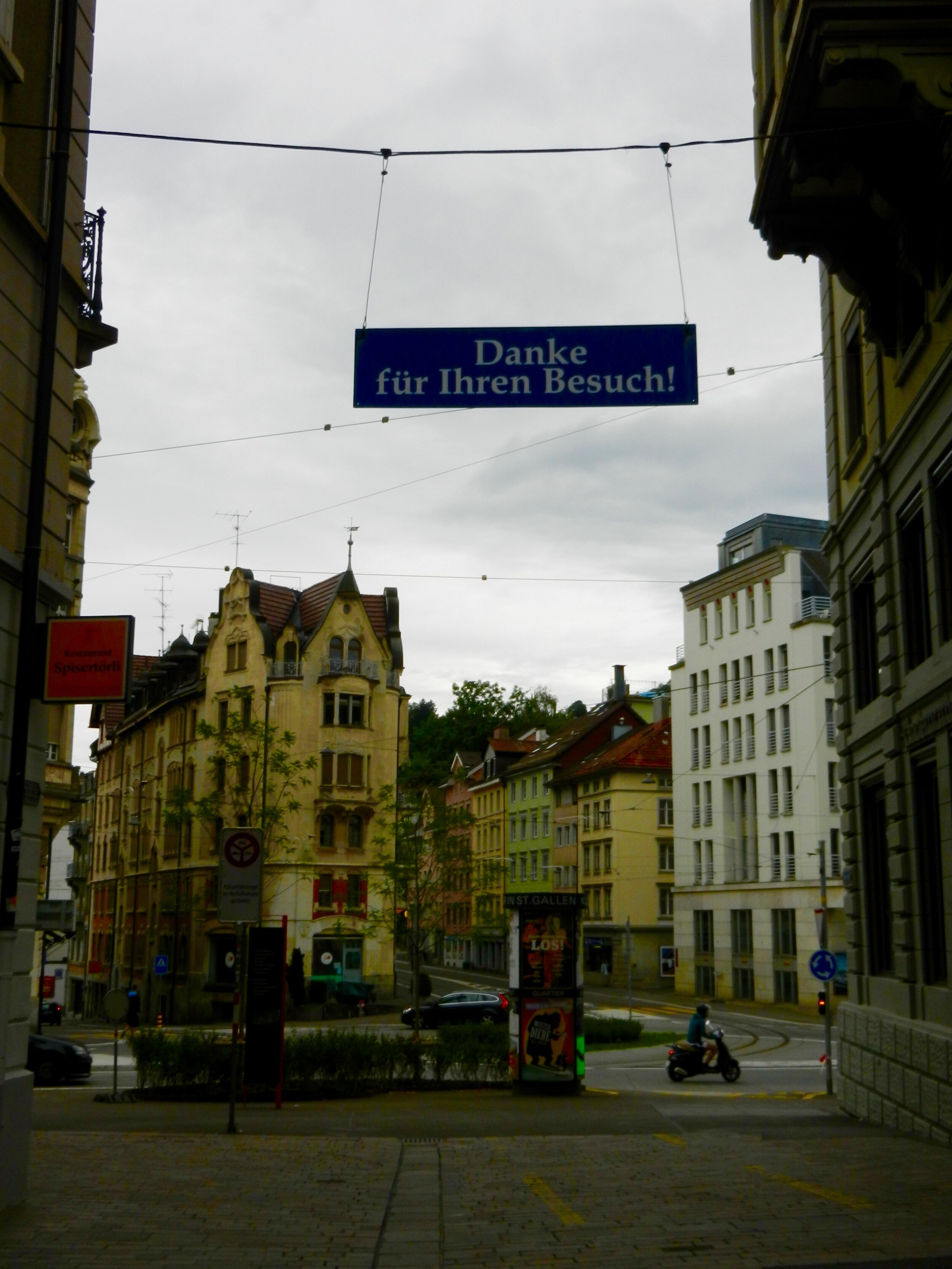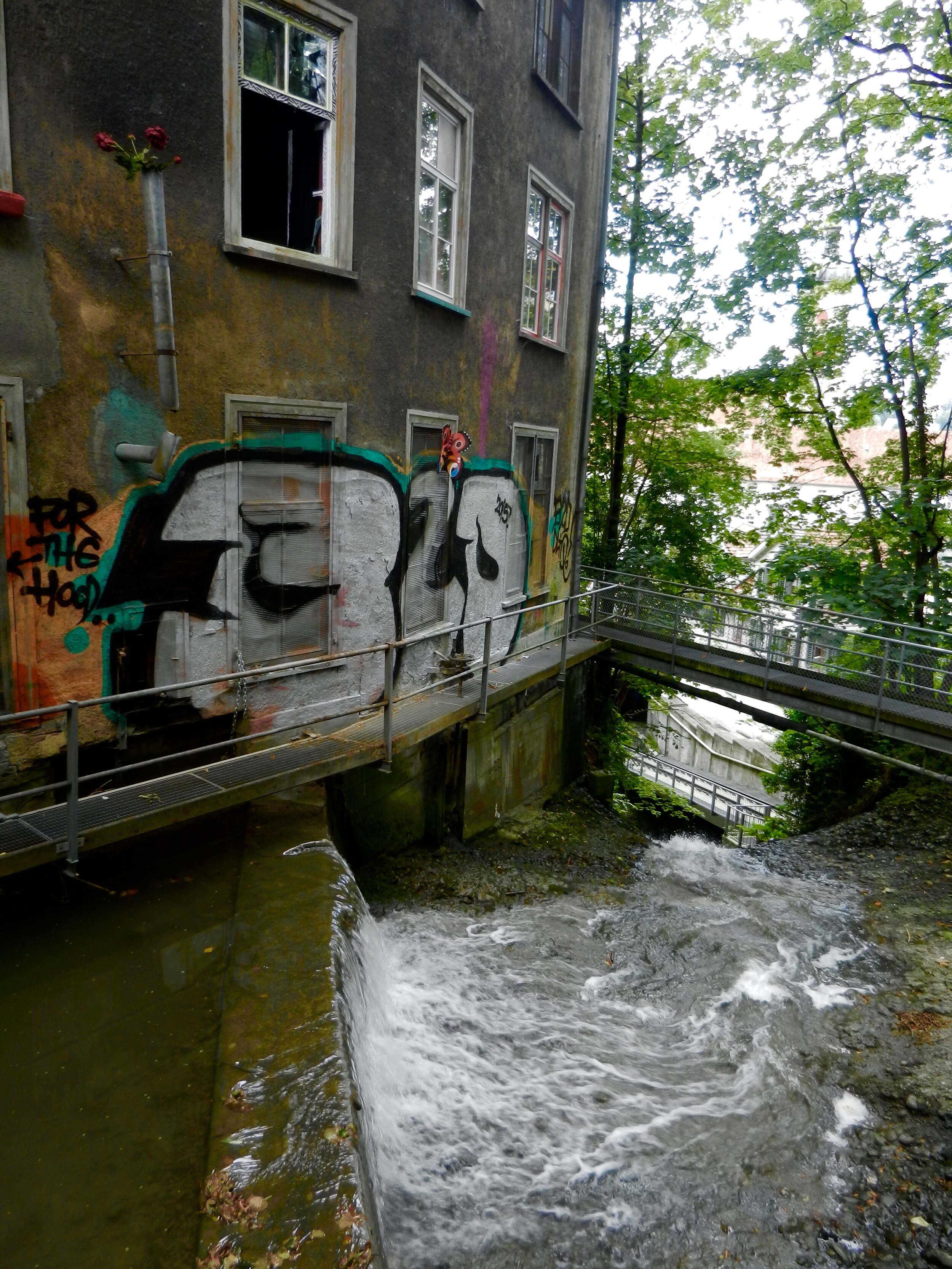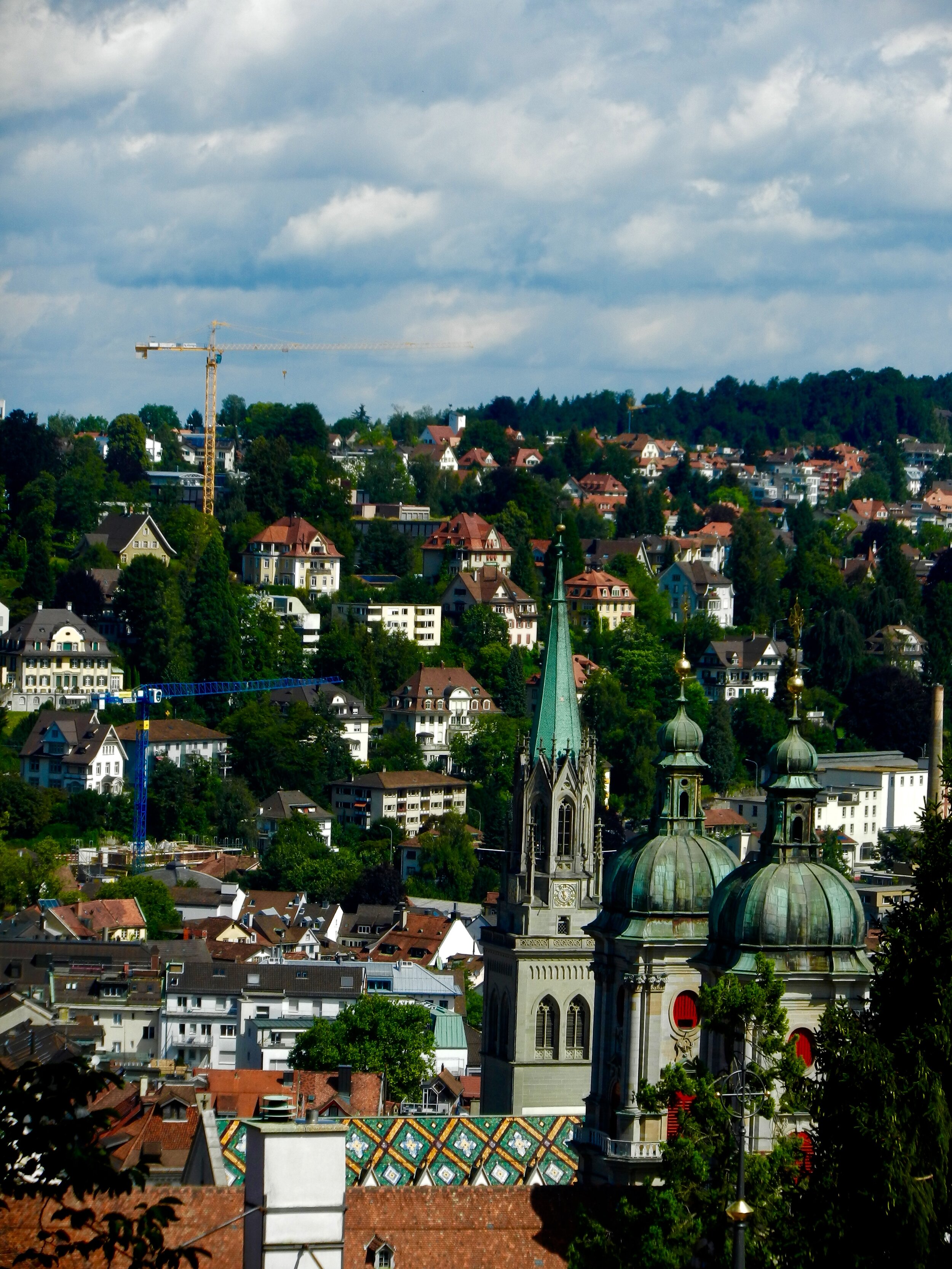St. Gallen was the third stop on my Switzerland round-trip. I took the train from Bellinzona to St. Gallen, excited for what was sure to be a drastic change in scenery and culture. St. Gallen is the largest city in the east of Switzerland. Busy during the school year thanks to the university located there, St. Gallen was surprisingly quiet when I visited during the summer.
Surprisingly, my first challenge came moments after stepping out of the train station. I couldn't get a map to load on my phone but knew that my hotel was very near the abbey - so I figured I would identify the strikingly beautiful church tower and just walked towards it. How many such towers could one small town have, after all?
Turns out, not a safe gamble to take in Europe. Definitely walked towards the wrong dang tower for about 20 minutes.
St. Gallen is probably the most culturally “German” town that I’ve visited in Switzerland so far. Yes, that sentence sounds kind of strange, but in a country like Switzerland it’s true. Far fewer people spoke English or French than in other areas I’ve visited so far, giving this stop on my trip a particular challenge, and nearly every older house was in the Bavarian style. Plus, the people were by far and large the friendliest I’ve met so far, for whatever reason.
St. Gallen was originally an abbey-town, as evidenced by the giant abbey grounds that dominate Old Town. This gives the town a really unique circular shape:
The town later became famous for its textile-making, and is now a university town. St. Gallen strikes me as a place with a bit of an identity crisis at the moment. The Old Town and Abbey of St. Gall is a UNESCO World Heritage Site and has been really nicely cleaned up in recent years, meaning it has great potential for tourists – but again, language diversity is more limited and the Old Town is actually quite small. The few historical sites are surrounded with shopping. The rest of St. Gallen is more modern, with smatterings of historical-looking buildings that are too far away or difficult to be found on foot.
This was also the most incredibly quiet town I’ve ever visited. Ever.
My primary reason for visiting St. Gallen was to visit the Stiftsbibliotek, the famous Abbey library - so I figured the quiet town was just an extension of that institute. Oh, ok, it's famous for a library - everyone here follows library rules. Cool.
In my travels I had forgotten that it was Sunday. And in Switzerland, Sunday is not Fun Day. Sunday is sleep, chores, church, family day. This was much more pronounced in quiet St. Gallen than the more cosmopolitan Geneva - where, if nothing else, the trams will be running.
This library contains thousands of very old historical texts, and has been called the most beautiful non-religious room in Switzerland and one of the most important libraries in the world, as well as one of the oldest in Switzerland. I wasn’t allowed to take photos inside, so here’s a borrowed one:
I also had to wear slippers inside to protect the gorgeous wood – one-size “fits” all slippers that were probably a size 20. I literally couldn’t lift my feet to walk, so I had the unique experience of sock-skating around an immensely historical library like a 5-year-old. You’re also not allowed to read anything, which I found a little disappointing. Like, really. I know, I know, centuries-old tomes but - what's a nerd to do??
It was strangely overwhelming and underwhelming at the same time. Underwhelming in that the room is not large - just one room with two floors, and feels slightly smaller than the above photo feels. Overwhelming in that WOW, that make the most out of that small real estate. Inlaid wood, murals, gilding, bookshelves up to the ceiling. Every surface is covered in intricate paintings or woodwork. All the shelves are clearly hand-built. There was a giant old-school globe, a slightly disturbing picture of a dead Jesus, and even more disturbing (and inexplicable…and cool), an Egyptian mummy.
Fun fact: in the St. Gallen Stiftsbibliotek you can find the oldest known depiction of bread in Switzerland - a circa 9th century ivory carving of St. Gallus himself sharing bread with a bear. As legend goes, the kind bear brought wood to help build the saint's cabin, and so the polite saint returned the favor in bread.
I bet you've been wondering about that for a while. Knowledge is power, friends.
So, points off for not being able to flip through the books. But major points for floor-skating, mummies, beauty, and just plain funkiness.
24 Hours in St. Gallen
Good for: book nerds, textile lovers, history lovers.
Where to stay: I LOVED Hotel Dom. It's modern, stylish, affordable, simple, yet located right in the heart of Old Town - literally, to get to the town square and abbey you need only step out the front door, turn right, and walk about 50 feet. The rooms were quite comfortable and the floor kitchen fully stocked with local beers and snacks. Additionally, the hotel makes a strong effort to staff local individuals with developmental disorders, giving them an A+ do-gooder rating in my book.
Where to eat: Hotel Dom, for all its perks, doesn't have the most fabulous breakfast. I recommend grabbing pastries and coffee from the numerous German bakeries nearby (there's one nearly directly across the street from the hotel!) There's a small cafe right across from the entryway to the Stiftsbibliothek that's good for grabbing sandwiches and drinks at lunchtime. Here, my recommendations fall short - as I visited on Sunday, most restaurants were closed I resorted to packed snacks and the aforementioned hotel beer for dinner. However, I've heard amazing things about the Lagerhaus, Jagerhof, and Engelis. Expect to pay a decent amount at these places (it's Switzerland, after all), and check the websites for important info - Jagerhof, for example, is closed on weekends, while Lagerhaus strongly encourages reservations).
Morning: start the day by visiting what I would consider the city's main attraction: the Aldstadt (Abbey grounds), Kathedrale (Cathedral) and Stiftsbibliothek. Explore the pretty abbey grounds, then peek into the Kathedrale, which opens at 9am every day. Be sure to check the signs closely so you don't accidentally come in during a service! The Stiftsbibliothek opens at 10am until 5pm every day, and tickets cost 12CHF for adults. If you stay at Hotel Dom, you can add this into the price of your stay and you'll get your ticket when you check in!
Afternoon: grab lunch and take the opportunity to explore the more modern sections of town. If you're into shopping, the Old Town area is chock-full of shops. If historic textiles are more your thing, you're also in luck - the Textilmuseum is open from 10-5 every day, with tickets costing 10 CHF. Explore the rich history of Swiss textile-making that started in the Middle Ages and lasted until 1918 before being reborn as a leader in the small luxury embroidery market. Enjoy some post-museum fresh air by wandering and exploring the many hidden juxtapositions of a historic centre clashing up against a thriving university.
Evening: Take the odd-looking Muhleggbahn, near the Kathedrale, to the top of the mountain to enjoy views of the entire town as the sunset (open 5:40am - 12:50am every day, tickets cost 3 CHF). From here you can properly enjoy the stunning tiled rooftop of the Kathedrale. Alternatively, you can hike up to the top of the mountain in about an hour (if you're hiking slowly!) - just follow the signs marked "Weg" ("path" in German). If trekking up a hill isn't your speed, check out the Kathedrale - churches often hold evening services and concerts, especially during the summer.
Note: St. Gallen has lots of funky festivals throughout the year and hidden gems. I highly recommend checking out My Switzerland for more ideas!

